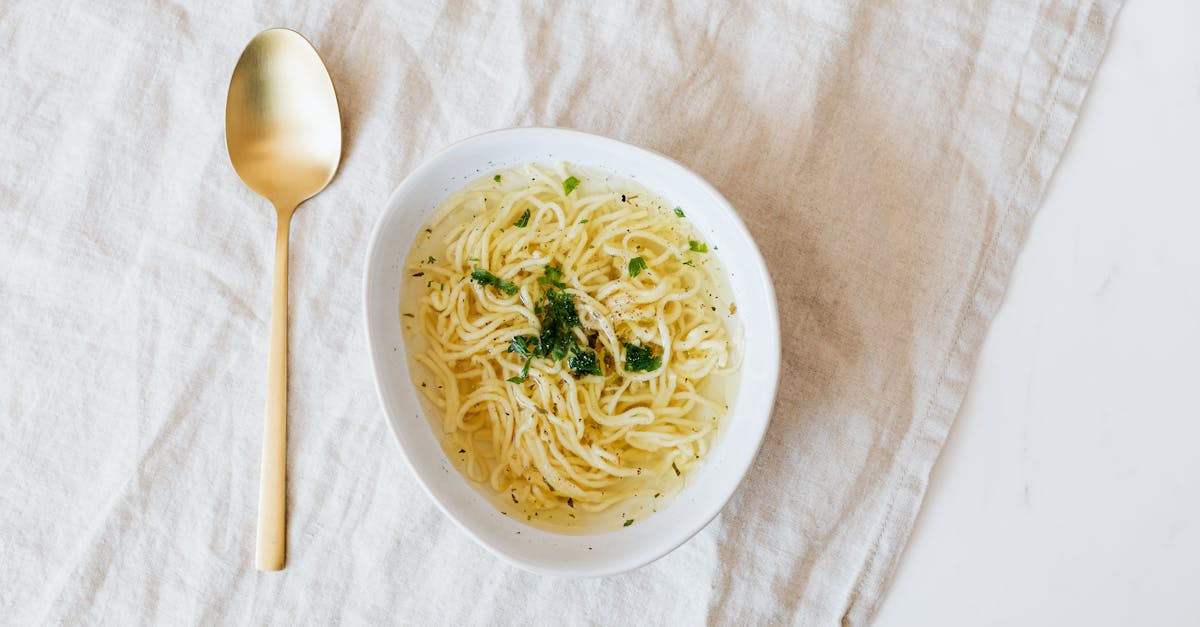Originally posted on April 23, 2025 @ 2:04 pm
When we think of Thai cuisine, one dish that often stands out is drunken noodles. This flavorful stir-fried noodle dish, known as Pad Kee Mao, combines a medley of fresh vegetables, aromatic herbs, and a kick of spice that keeps us coming back for more. But what exactly makes the drunken noodle menu so enticing?
As we explore the various options available, we’ll uncover the delightful ingredients and unique variations that make each restaurant’s rendition special.
From the perfect balance of savory and spicy to the addition of proteins like chicken, shrimp, or tofu, the drunken noodle menu offers something for everyone.
Join us as we dive into the world of drunken noodles and discover why this dish deserves a spot on our dining table.
Overview of Drunken Noodle
Drunken noodles, or Pad Kee Mao, represent a vibrant dish within Thai cuisine celebrated for its robust flavors and satisfying textures. Known for their unique blend of fresh vegetables, aromatic herbs, and bold spices, these stir-fried noodles promise an unforgettable dining experience.
Core Ingredients
Drunken noodles feature a variety of ingredients that contribute to their distinctive taste. Here’s a breakdown of the primary components:
| Ingredient | Description |
|---|---|
| Rice Noodles | Broad noodles that absorb flavors well. |
| Vegetables | Commonly includes bell peppers, broccoli, and bok choy. |
| Protein | Options include chicken, shrimp, beef, or tofu. |
| Sauces | Soy sauce, oyster sauce, and a hint of fish sauce enhance savoriness. |
| Spices | Thai basil, chilies, and garlic add heat and depth. |
Flavor Profile
The flavor profile of drunken noodles is marked by a harmonious balance of savory, spicy, and herbaceous notes. Each ingredient plays a key role in creating a multidimensional dish:
- Savory: Rich sauces and proteins provide a hearty base.
- Spicy: Fresh chilies elevate the heat, giving the dish a lively kick.
- Herbaceous: Thai basil and cilantro infuse freshness, complementing the boldness of other ingredients.
Variations
Several restaurants offer unique twists on drunken noodles, catering to diverse palates. Some notable variations include:
- Vegetarian Drunken Noodles: Uses tofu and a medley of vegetables, ensuring a satisfying meat-free option.
- Seafood Drunken Noodles: Features a combination of shrimp, scallops, or squid for a delightful oceanic taste.
- Spicy Drunken Noodles: Amplifies the heat with additional chilies or spicy sauces, appealing to those who enjoy intense flavors.
Culinary Significance
As stated by Chef Somchai, “Drunken noodles capture the essence of Thai cuisine: bold flavors, fresh ingredients, and a perfect balance.” This signature dish not only delights the taste buds but also embodies the joyous spirit of Thai dining, where sharing and savoring food brings people together.
Drunken noodles stand out not just for their savory, spicy flavor combinations but also for the cultural experience they provide. Each plate offers a slice of Thailand, allowing diners to indulge in a rich culinary tradition.
Key Ingredients in Drunken Noodle
Drunken noodles, or Pad Kee Mao, rely on a thoughtful selection of ingredients that contribute to the dish’s vibrant flavors and textures. Each component plays a vital role in crafting this beloved culinary experience.
Noodles
Broad Rice Noodles:
- Essential for drunken noodles, these wide, flat rice noodles provide a chewy texture and absorb flavors well.
- Cooked quickly at high heat, they develop a slightly charred quality that enhances the overall taste.
| Type | Size | Texture |
|---|---|---|
| Rice Noodles | Wide (3/8 inch) | Chewy, Soft |
Vegetables
Fresh Vegetables:
- A colorful mix of vegetables enhances both the visual appeal and nutritional value of drunken noodles. Key vegetables include:
- Bell Peppers: Add sweetness and crunch.
- Broccoli: Provides a nutrient boost and green color.
- Carrots: Introduce a slight earthiness and vibrant hue.
Quote:
“The freshness of the vegetables complements the boldness of the spices, creating a beautifully balanced dish.” – Chef Somchai
| Vegetable | Flavor Profile | Texture |
|---|---|---|
| Bell Peppers | Sweet | Crunchy |
| Broccoli | Earthy | Tender |
| Carrots | Slightly Sweet | Crisp |
Proteins
- The choice of protein complements the noodles and vegetables, enriching the dish. Common options include:
- Chicken: Adds a savory flavor and tender bites.
- Shrimp: Offers a delightful seafood twist, bringing a hint of sweetness.
- Tofu: A plant-based alternative that absorbs flavors beautifully and provides a satisfying texture.
| Protein | Flavor Profile | Suggested Preparation |
|---|---|---|
| Chicken | Savory | Stir-fried or grilled |
| Shrimp | Sweet | Quickly sautéed |
| Tofu | Neutral | Marinated and fried |
Combining these ingredients creates the harmony of flavors that make drunken noodles a standout dish in Thai cuisine. Each bite showcases freshness and depth, ensuring that every dining experience is memorable.
Variations of Drunken Noodle
Drunken noodles, or Pad Kee Mao, showcase a variety of adaptations that reflect regional differences and cater to popular tastes. Each variation enriches the experience, highlighting the versatility of this beloved dish.
Regional Differences
Different regions of Thailand offer distinct takes on drunken noodles. Here are some notable variations:
| Region | Variation Description |
|---|---|
| Bangkok | Features a spicy and aromatic sauce with a combination of herbs that enhance the bold flavors. |
| Chiang Mai | Incorporates local ingredients, often including northern Thai herbs and spices, creating a unique profile. |
| Isaan | Offers a fiery twist with more chili, reflecting the spicier palate of northeastern Thailand. |
| Phuket | Highlights seafood options, utilizing fresh local catches like shrimp and squid in the noodle dish. |
As Chef Somchai puts it, “Regional variations of drunken noodles reflect the diverse culinary practices across Thailand, each telling its own flavorful story.”
Popular Additions
Popular additions elevate drunken noodles, making them even more appealing. Here are some common enhancements:
| Addition | Description |
|---|---|
| Eggs | Fried or scrambled eggs add richness and a creamy texture. |
| Thai Basil | Fresh Thai basil imparts a fragrant, herbal note that complements the dish. |
| Bean Sprouts | Crunchy bean sprouts offer a fresh contrast to the soft noodles. |
| Peanuts | Crushed peanuts provide a savory crunch that enhances the overall dish. |
These additions not only enhance flavors but also provide a burst of texture and freshness. We encourage experimentation with different ingredients for a personalized touch on our drunken noodle creations.
The versatility of drunken noodles ensures that whether we enjoy them in a local restaurant or prepare them at home, the experience remains vibrant and exciting. Each bite invites us to explore the rich tapestry of Thai culinary tradition.
Building Your Own Drunken Noodle
Customizing our drunken noodles allows us to create a personalized dish that matches our taste preferences. By selecting the right noodles, sauces, proteins, and toppings, we can develop a balanced and flavorful meal.
Choosing Your Noodles
Choosing the right noodles is vital for our drunken noodle experience. We recommend starting with broad rice noodles due to their chewy texture and ability to absorb flavors. Other options include:
- Egg Noodles: Adds richness and depth.
- Thin Rice Noodles: Offers a lighter texture.
| Noodle Type | Texture | Flavor Profile |
|---|---|---|
| Broad Rice Noodles | Chewy | Mild, absorbs flavors well |
| Egg Noodles | Soft and rich | Slightly buttery |
| Thin Rice Noodles | Delicate | Light, less absorbent |
We can experiment with these various noodles to discover our preferred texture and flavor palette.
Selecting Sauces and Proteins
In drunken noodles, sauces and proteins elevate the dish to new heights. Common sauce options include:
- Soy Sauce: A staple for savory depth.
- Oyster Sauce: Introduces sweetness and umami.
- Chili Sauce: Adds heat and tang.
Proteins provide essential flavors and energy:
- Chicken: Juicy and versatile.
- Shrimp: Tender and complements the spices.
- Tofu: Ideal for a plant-based option, absorbing flavors beautifully.
| Sauce Type | Flavor Impact | Protein Options | Flavor Contribution |
|---|---|---|---|
| Soy Sauce | Savory | Chicken | Juicy, versatile |
| Oyster Sauce | Umami | Shrimp | Tender, sweet |
| Chili Sauce | Spicy | Tofu | Absorbent, creamy |
As we mix and match these sauces and proteins, we create a balance of savory, spicy, and sweet flavors.
Chef Somchai reminds us: “A great drunken noodle captures the spirit of Thailand through its colorful ingredients.” By personalizing our dish, we create a unique culinary journey that mirrors our preferences and exploration of Thai cuisine.
Conclusion
Drunken noodles truly embody the vibrant essence of Thai cuisine. With their bold flavors and customizable options, they invite us to explore a world of taste that caters to every palate. Whether we prefer a spicy kick or a milder version, there’s a perfect adaptation waiting for us.
As we savor each bite, we celebrate not just the dish itself but the rich culinary traditions that inspire it. Drunken noodles aren’t just a meal; they’re an experience that brings us together, showcasing the joy of sharing good food. So next time we’re in the mood for something satisfying and flavorful, let’s remember to indulge in this classic dish.
Frequently Asked Questions
What are drunken noodles?
Drunken noodles, or Pad Kee Mao, are a popular Thai dish made with stir-fried broad rice noodles, fresh vegetables, and bold spices. The dish is known for its robust flavors and satisfying textures, often featuring proteins like chicken, shrimp, or tofu, and savory sauces such as soy and oyster sauce.
What are the main ingredients in drunken noodles?
Key ingredients in drunken noodles include broad rice noodles, a colorful mix of vegetables like bell peppers and broccoli, proteins (chicken, shrimp, or tofu), and sauces like soy and oyster sauce. Fresh chilies and Thai basil add depth to the dish’s flavor profile.
Can drunken noodles be customized?
Yes, drunken noodles are highly customizable! Diners can choose their preferred noodles, sauces, proteins, and toppings such as fried eggs or crushed peanuts, allowing for a personalized culinary experience that caters to individual tastes and preferences.
Are there vegan options for drunken noodles?
Absolutely! Many restaurants offer vegetarian and vegan variations of drunken noodles, using tofu for protein and omitting animal products. Veggies and flavors can be adjusted to create a delightful plant-based dish that still delivers robust flavors.
What variations of drunken noodles exist?
Drunken noodles have several regional variations across Thailand. For example, Bangkok features a spicy and aromatic version, while Chiang Mai offers a unique profile. Isaan brings a fiery twist, and Phuket focuses more on seafood offerings, catering to different palates.


